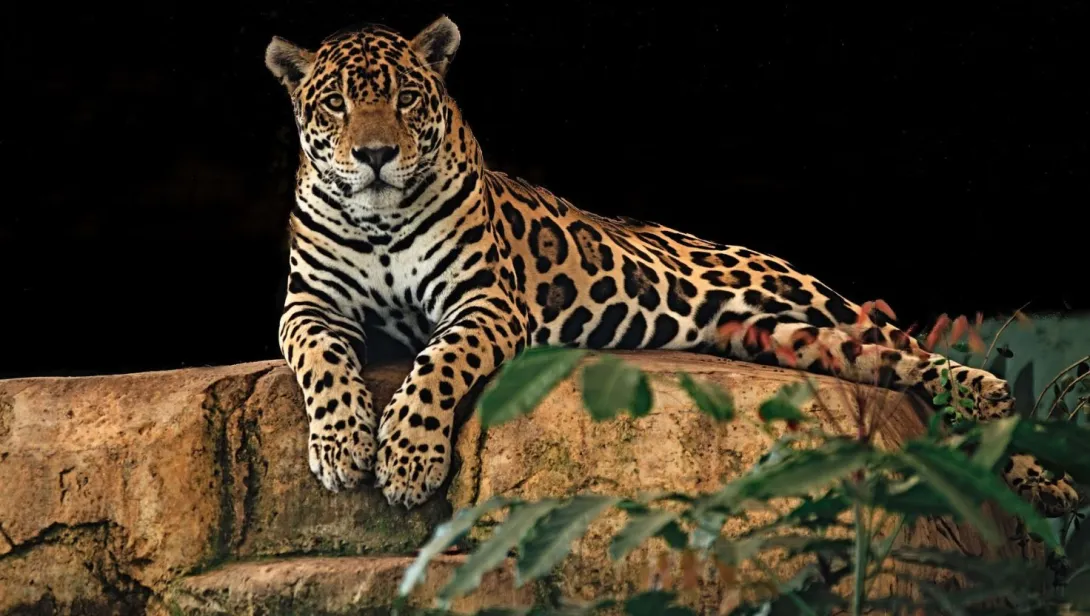Skip to main content
Introduction
- Jaguars are the largest big cats in the Americas and are scientifically known as Panthera onca.
- They are known for their powerful build, strong jaws, and distinctive rosette-patterned fur.
- Jaguars are apex predators, playing a crucial role in maintaining the balance of their ecosystems.
Physical Characteristics
- Jaguars have a stocky and muscular body, with males weighing between 120 to 250 pounds (54 to 113 kg) and females slightly smaller.
- Their coat is covered in rosettes (rose-like spots), which often have smaller spots inside them.
- Jaguars have the strongest bite force of all big cats, capable of crushing the skulls of their prey.
- They are excellent swimmers and are often found near rivers, lakes, and wetlands.
Habitat and Distribution
- Jaguars are primarily found in Central and South America, with a small population in the southwestern United States.
- They inhabit a variety of environments, including rainforests, swamps, grasslands, and dry forests.
- Jaguars are solitary and territorial, marking their territory with scent markings and scratch marks on trees.
Diet and Hunting
- Jaguars are carnivorous and hunt a wide range of prey, including deer, peccaries, capybaras, and caimans.
- They are stealthy hunters, relying on their camouflage and silent stalking to ambush prey.
- Jaguars are known for their unique killing method: they pierce the skull or neck of their prey with a single bite.
- They are opportunistic feeders and will eat almost anything they can catch, including fish and turtles.
Behavior and Communication
- Jaguars are solitary animals, except during mating season or when a mother is raising her cubs.
- They communicate through vocalizations such as roars, grunts, and growls, as well as through body language.
- Jaguars are territorial and use scent markings and scratch marks to define their territory.
- They are nocturnal, spending most of the day resting in dense vegetation or near water sources.
Reproduction and Lifespan
- Female jaguars give birth to 1 to 4 cubs after a gestation period of about 90 to 110 days.
- Jaguar cubs are born blind and rely on their mother for protection and nourishment.
- Cubs stay with their mother for 1.5 to 2 years before becoming independent.
- Jaguars have a lifespan of 12 to 15 years in the wild and up to 20 years in captivity.
Conservation Status
- Jaguars are classified as Near Threatened on the IUCN Red List, with populations declining due to habitat loss and poaching.
- There are an estimated 15,000 to 20,000 jaguars left in the wild.
- They are threatened by habitat destruction, human-wildlife conflict, and illegal wildlife trade.
- Conservation efforts include protected areas, anti-poaching measures, and community-based conservation programs.
Unique Adaptations
- Jaguars are excellent swimmers and are often found near water sources, unlike most other big cats.
- Their rosette-patterned fur provides camouflage in their natural habitats.
- Jaguars have strong jaws and can crush the skulls of their prey with a single bite.
- They are highly adaptable and can survive in a variety of environments, from rainforests to arid scrublands.
Cultural Significance
- Jaguars are revered in many indigenous cultures as symbols of power, strength, and mystery.
- They are featured in mythology, art, and literature across Central and South America.
- In Mayan and Aztec cultures, jaguars were associated with deities and warriors.
Fun Facts
- Jaguars can run at speeds of up to 50 mph (80 km/h) but prefer to ambush their prey rather than chase it.
- They are strong climbers and often drag their prey up trees to avoid scavengers.
- Jaguars are keystone species, playing a crucial role in maintaining the balance of their ecosystems.
- They are highly elusive and are rarely seen in the wild.
- Jaguars have a unique ability to adapt to different environments, from rainforests to grasslands.
- They are not true leopards and are more closely related to lions and tigers.
Threats to Jaguars
- Habitat loss due to deforestation and urbanization is a major threat to jaguars.
- Human-wildlife conflict often results in jaguars being killed by farmers protecting livestock.
- Poaching for their fur and body parts is a significant cause of their decline.
- Climate change is altering their habitats, making it harder for them to find prey.
Conservation Efforts
- Protected areas and wildlife reserves have been established to safeguard jaguar habitats.
- Anti-poaching initiatives and stricter wildlife protection laws have helped reduce illegal hunting.
- Community-based conservation programs work to reduce human-wildlife conflict.
- Global awareness campaigns highlight the importance of jaguar conservation and encourage public support.
